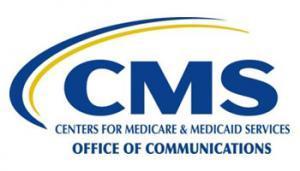CMS confirms 9.8 million enrollees received $2.0 BILLION in #ACA MLR insurer rebates this year

I haven't written much about the ACA's Medical Loss Ratio (MLR) program this year. Here's a very simplified explainer:
Ever since the ACA went into effect in 2011 (3 years before newly-sold policies had to be ACA compliant), to help reduce price gouging, insurance carriers have been required to spend a minimum of 80% of their premium revenue (85% for the large group market) on actual medical claims.
Put another way, their gross margins are limited to no more than 20% (or 15% in the large group market). Remember, that's their gross margin, not net; all operational expenses must come out of that 20% (15%). The idea is that they should be spending as much of your premium dollars as possible on actual healthcare, as opposed to junkets to Tahiti or marble staircases in the corporate offices, etc. Anything over that 20% (15%) gross margin has to be rebated to the policyholder.
Put simply, let's say that your insurance carrier brought in $100 million in premium revenue, but only spent $70 million in actual medical claims, giving them a MLR of 70% instead of the 80% minimum. Under the MLR rule, they have to pay back the $10 million they overcharged their enrollees!
Now, let's say your 2020 ACA insurance premiums cost $800/month, or $9,600 for the full year. Under the MLR rule, you'd be repaid around $960 of that!
Now, in practice, it gets more complicated for several reasons: For one thing, the MLR formula is calculated on a 3-year rolling average, so if your carrier underestimated their expenses in 2019 or 2019 (ending the year with an MLR over 80%) that would cancel out some or all of the 2020 windfall. However, the bottom line is that over the years, ACA enrollees have received billions of dollars in rebated excess premiums:
- 2011: $399.5 million nationally (per-person breakout not available)
- 2012: $192.2 million to 2.73 million people ($70/apiece on average)
- 2013: $128.3 million to 2.10 million people ($61/apiece on average)
- 2014: $238.2 million to 2.14 million people ($111/apiece on average)
- 2015: $107.4 million to 1.19 million people ($90/apiece on average)
- 2016: $102.9 million to 904,000 people ($114/apiece on average)
- 2017: $132.5 million to 967,000 people ($137/apiece on average)
- 2018: $769.3 million to 3.70 million people ($208/apiece on average)
- 2019: $1.72 billion to 5.18 million people ($332/apiece on average)
It's important to note that the amounts above only include the ACA's individual market, not the small or large group markets, which have also rebated hundreds of millions of dollars to millions of employers over the years.
And yes, last year's MLR rebates (which were actually for the 2019 enrollment year) were absurdly high for a number of reasons I won't rehash here.
Well, CMS just released the official 2020 MLR rebate report, and while it's not as off-the-charts crazy high as last year, it's still pretty massive:
Health insurers have provided approximately $2 billion in rebates for the 2020 reporting year to an estimated 9.8 million consumers, the Centers for Medicare & Medicaid Services (CMS) is announcing today. Insurers were generally required to provide such rebates and notice of any rebates owed to consumers no later than September 30, 2021. Rebate payments can be provided in the form of a premium credit, lump-sum check, or, if a consumer paid the premium using a credit card or direct debit, by lump-sum reimbursement to the account used to pay the premium.
CMS released a list today of all insurers owing Medical Ratio Loss (MLR) rebates for the 2020 reporting year, with total amounts by state and market. The CMS market breakdown estimate includes approximately 4.8 million consumers in the individual market and 5 million employees in the group market (this represents 2.6 million employees in the small group market, and 2.4 million employees in the large group market).
The Affordable Care Act requires health insurers to disclose how they’re spending consumers’ premium payments. If insurers in the individual or small group markets spend less than 80% (less than 85% for large group plans) of after-tax premiums on paying enrollees’ medical claims and activities that improve the quality of care, they must rebate the excess premium dollars back to consumers. For the 2020 reporting year, health insurers provided approximately $1.3 billion in rebates in the individual market, $384 million in the small group market, and $291 million in the large group market.
Today’s release also includes the Public Use Files (PUFs) containing the data from all health insurers’ final MLR filings for the 2020 reporting year.
The individual market total for 2020 is $1.33 billion in rebates paid out to 4.77 million enrollees, for an average rebate check of $279 apiece.
I should note that while most of these payments were sent as checks directly to the enrollees back in August or September of this year, there are some cases where the money was partially paid back in the form of discounted or waived monthly premiums earlier in the year. This is something which some carriers did in 2020 as well after the COVID-19 pandemic hit, and I think it was allowed this year as well (I could be wrong about that).
As noted in the press release, another $384 million went out to 2.56 million small business employees (their employers are required to pass the rebate along to them), and $291 million to 2.44 million medium or large business employees.



